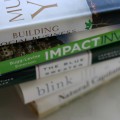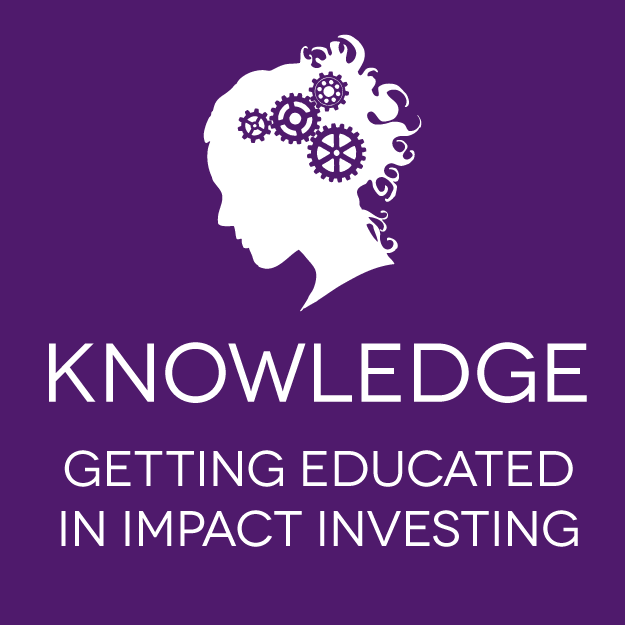As the field of impact investment grows (to at least $114 billion US dollars according to the Global Impact Investing Network in 2017), investors, entrepreneurs, and intermediaries look for more effective ways of identifying, assessing, and communicating the type and level of positive impact generated from an investment opportunity.
Our current systems of evaluating business success are constrained by generally accepted accounting principles and standards and traditional corporate finance measurement tools such as discounted cash flows, net asset value, and earnings per share. Sometime in history, we decided what we would count and what we wouldn’t. But now we’re re-evaluating what information is meaningful to help us make business and investment decisions.
Some of the most commonly used and referenced frameworks for impact assessment include:
- B Analytics – Rooted in the B Impact Assessment, B Analytics encompasses a variety of impact assessment tools and frameworks including the B Corporation certification and GIIRS as pointed out by Luni Libes.
- IRIS – IRIS is an initiative of the Global Impact Investing Network (GIIN), a nonprofit organization dedicated to increasing the scale and effectiveness of impact investing. The Rockefeller Foundation, Acumen, and B Lab were the early co-creators and managers of IRIS.
- UN Sustainable Development Goals – Increasingly, I’m seeing impact ventures and funds reference one or more of the 17 UN SDGs as a way of identifying and benchmarking the impact they generate. I am thinking about doing something similar, by mapping Access to Essential Resources (part of Integrated Investing, see below) to the UN SDGs.
Emerging or possibly lesser known impact assessment frameworks include:
- ClearlySo ATLAS – Used by investors such as Octopus Investments.
- The Transformational Index – Per their website, the Transformational Index is used by impact investors such as Resonance Ltd, Leicester Diocese Growth Fund, Wokingham School’s Trust, Vital Regen, TLG, The Woman’s Health Initiative, and Imagine Foundation.
- Integrated Investing – Impact investment decision-making methodology that is applied in the evaluation process for Pique Fund.
Here’s some food for thought about assessing impact.
The best way to know if some activity, process, or action is impactful in a positive way is to experience it yourself. Think about the things that have had the most profound impact in your life – they are probably things you experienced first-hand. The way you experienced impact was an emotion. There may have been numbers and data involved, but it’s the positive emotion you got seeing a number relative to a benchmark.
Understanding impact second-hand involves communication by words or numbers. Story-telling is a very compelling way of communicating impact. Marketers know this and so should impact entrepreneurs and investors. The choice and use of words is a great way of stirring emotional reactions and therefore informing or influencing decisions. But stories can vary or be manipulated. People receive or interpret the information differently. Despite the efficacy of narrative, it may be seen as unreliable for decision-making, at least on its own.
Communicating with numbers is also a form of story-telling. There may be a belief that numbers are objective. Whilst we could agree on a formula or ratio and the calculation of the number could be reasonably fool-proof, there is still risk of miscommunication or misinterpretation. We might not agree on the formula or ratio itself or we might disagree with the benchmarks with which we compare the numbers. We have this issue now and I don’t think this will go away, rather we need to embrace the differences and take that into consideration when assessing impact. One of the best examples I think of is our measures of success. Some people are not motivated by money and may feel reaching a salary of $40,000 means success, whereas others are not satisfied even at $150,000. In some situations, making a difference in 30 people’s lives (or maybe even just one!) is impactful. How do we compare that to touching 30,000 lives in a more superficial, yet still impactful way?
Ultimately, we want to be able to make decisions about how to allocate our resources. Assessing impact is helpful and necessary for that process, but I caution that we shouldn’t go down a path that leads us to problems and shortcomings similar to those we have with our current economic measurement systems.
~~~~~
For more impact investing resources and tools, check out Integrated Investing: Impact Investing with Head, Heart, Body, and Soul, available at all major online book retailers.
Download your free 24-page Integrated Investing Toolkit, by signing up to the Pique Ventures newsletter.




